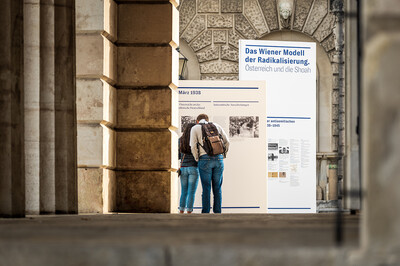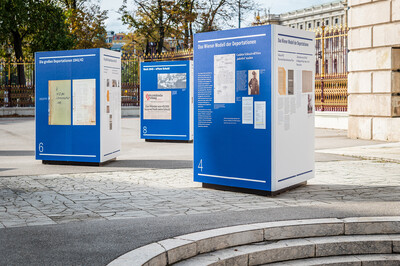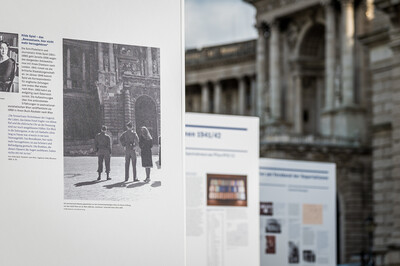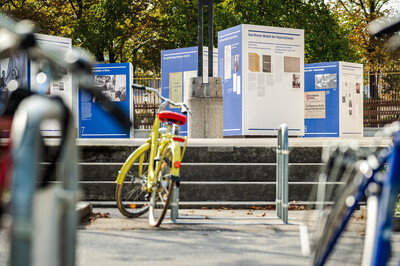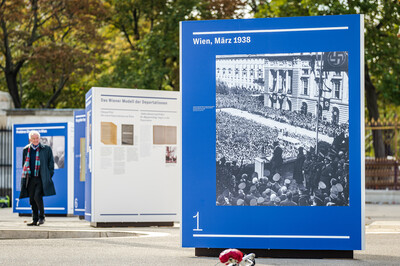VIENNA AS A TESTING GROUND FOR ANTISEMITISM
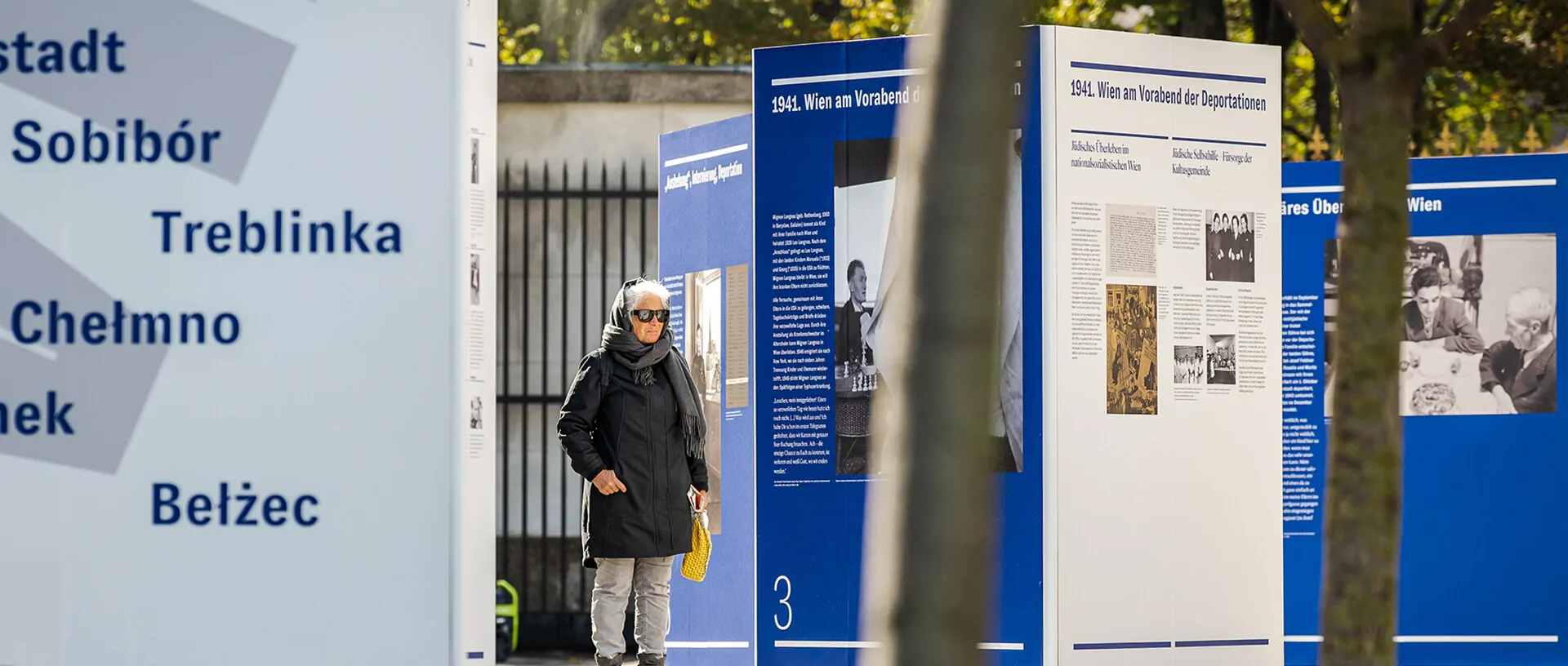
Vienna was the first major city to carry out deportations of Jews in the spring of 1941, and this model was to be installed throughout the German Reich from October. Vienna was seen as a testing ground in matters of antisemitism. That is why National Socialists like Adolf Eichmann moved to Austria – he set up the "Central Office for Jewish Emigration" in 1938, the aim of which was to promote the National Socialist policy of expulsion and robbery.
On the 80th anniversary of the first nationwide deportations in October 1941, the House of Austrian History (hdgö), in cooperation with the Austrian Academy of Sciences (OeAW) and the University of Vienna, is presenting the outdoor exhibition "The Vienna Model of Radicalization. Austria and the Shoah" (October 15 to December 10) at Heldenplatz.
"The propensity to use violence was higher. In Karl Lueger's Vienna there was widespread populist antisemitism that did not exist in other cities," says OeAW historian Heidemarie Uhl, one of the exhibition's curators, in an interview.
These crimes happened in our society. The Holocaust didn't happen on another planet. That must be firmly anchored in historical awareness.
LEADING THE WAY IN RADICALIZATION
The fact that Vienna played a pioneering role in the radicalization of antisemitism during the Nazi era is not anchored in public awareness. How did this approach to the exhibition come about?
Heidemarie Uhl: That really is a new perspective. In the scientific literature, the question of why Vienna wanted to be the first large city to be "Jew-free" only appears very occasionally. In Holocaust research, there is currently an increasing focus on the micro and macro perspective and their relationship to one another. In other words, zooming in on exactly what happened on your own doorstep, and then asking how that was socially possible. Today it is difficult for us to comprehend that 130,000 Jews were expelled from Vienna and that more than 45,000 who did not manage to escape were interned in the middle of the 2nd district and deported from the Aspang railway station to the ghettos and extermination camps, where most were murdered. What's disturbing is that these crimes happened in our society. The Holocaust didn't happen on another planet. That must be firmly anchored in historical awareness.
What does that mean in concrete terms?
Uhl: We tried to link the experiences and life stories of the persecuted with the strategies of the Nazi institutions that carried out the deportations. We wanted to ask the question: why Vienna of all places? One of the answers is: the propensity to use violence was higher. In Karl Lueger's Vienna there was widespread populist antisemitism that did not exist in other cities. After the "Anschluss" in 1938, the Jewish population was fair game, and it was known that there would be no resistance to the Nazi terror.
In Karl Lueger's Vienna there was widespread populist antisemitism that did not exist in other cities. After the "Anschluss" in 1938, the Jewish population was fair game.
AUSTRIA AS A MOTOR FOR ANTISEMITIC MEASURES
It is often said that Adolf Hitler became big in Germany. Your exhibition shows that Vienna played an important role in the radicalization of antisemitism. How does that fit together?
Uhl: Hitler's NSDAP got rid of democracy in Germany in 1933 and set up a terror regime. The antisemitic measures that were successively passed in the "Third Reich" over five years became effective in Austria after the "Anschluss" in one fell swoop. From March 1938, Austria became the motor for the intensification of antisemitic measures.
One reason why it happened so quickly: after the "Anschluss", the entire administrative apparatus of the Austrian "Ständestaat" (corporate state) dictatorship was replaced and filled with National Socialists. That did not happen so fast after the seizure of power in 1933 in Germany. In the spring of 1941, Vienna was the first major city to carry out deportations according to the model that was the order of the day in the entire German Reich from October onwards. Everything was tried out here; the detention camps, the internments, the trains with a thousand people each. Vienna became a testing ground.
The Nazis from Germany saw what would be possible in Austria. New forms of administrative terror could be tried out.
GOLD RUSH ATMOSPHERE OF ADMINISTRATIVE TERROR
What role did Adolf Eichmann, who is regarded as the architect of industrial mass extermination, play in Austria?
Uhl: Eichmann saw career opportunities in Austria that he would not have had on this scale in Berlin. There was a kind of gold rush atmosphere. The Nazis from Germany saw what would be possible in Austria. New forms of administrative terror could be tried out, such as the "Central Office for Jewish Emigration" set up by Eichmann in 1938. It was Eichmann's idea to put the "Israelitische Kultusgemeinde" (Jewish Community) under his control and to force it to support the National Socialist expulsion and robbery policy.
Is resistance also discussed?
Uhl: For a long time, history was only written from the perpetrator's perspective and with the perpetrator's sources. The new research on the Holocaust in Vienna, by the historians Michaela Raggam-Blesch, Dieter Hecht and Eleonore Lappin-Eppel, shows the reactions of the people who were persecuted. It is important to ask: What room for maneuver did they have? The Kultusgemeinde tried to respond as well as possible; to offer soup kitchens, medical and old-age provisions. But there was little it could do. The writer Doron Rabinovici coined the term "Instanzen der Ohnmacht" (Authorities of Powerlessness) for this.
AT A GLANCE
Heidemarie Uhl is a lecturer at the Universities of Vienna and Graz and researcher at the Institute of Culture Studies and Theatre History of the Austrian Academy of Sciences (OeAW).
"The Vienna Model of Radicalization. Austria and the Shoah": The outdoor exhibition can be seen free of charge from October 15 to December 10, 2021, at Heldenplatz next to the Outer Castle Gate. The curators are Michaela Raggam-Blesch, Heidemarie Uhl and Isolde Vogel. The exhibition by the House of Austrian History was created in cooperation with the Institute of Culture Studies and Theatre History of the Austrian Academy of Sciences (OeAW) and the Department of Contemporary History of the University of Vienna as well as the "Verein zur Förderung kulturwissenschaftlicher Forschungen".
Funding:
The exhibition is funded by the Federal Chancellery (for the outdoor exhibition) as well as the Federal Ministry for European and International Affairs; the Federal Ministry for Arts, Culture, Civil Service and Sport; the Future Fund of the Republic of Austria; the National Fund of the Republic of Austria for Victims of National Socialism; and the City of Vienna (for the creation/curation).
